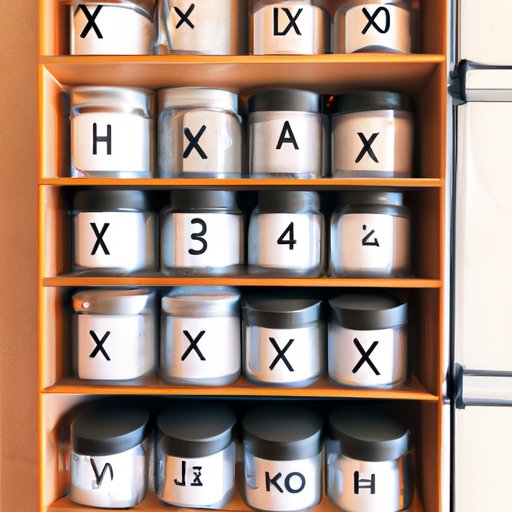Introduction
A pantry is a central part of any kitchen. Having a well-organized pantry can help you efficiently store food items, save time, and ensure that you don’t waste any food. Whether you have a small or large pantry, organizing it can seem daunting. In this article, we’ll share some practical tips and ideas on how to organize your pantry step-by-step, including how to maintain it once you have it organized.
A Step-by-Step Guide to Organizing Your Pantry
The first step to organizing your pantry is to purge all of the expired or unwanted items. This will not only declutter your pantry but also help you identify what you need. You can use this opportunity to donate items that are still good but you won’t be using, and discard items that are no longer fit for consumption. Once you have decluttered, consider categorizing your items.
Start by grouping similar items, such as baking goods, canned goods, snacks, and spices, to simplify your pantry storage system. Use containers, baskets, and bins to help you categorize your items effectively. Transparent containers and bins make it easier to identify what is inside. Using shelf risers can be an efficient way of creating more space for storage.
Pantry Organization Ideas for Small Spaces
Organizing a small pantry can be challenging, but a few tips can help maximize the space. One essential tip is to utilize all available space, including vertical space. Consider installing hanging shelves or adding hooks to the inside of your pantry doors to store smaller items, such as spices, using a spice rack or spice jars. Another idea is to use shelf organizers or risers to create additional storage space.
The Benefits of an Organized Pantry
Aside from creating a visually appealing space, there are several significant benefits to organizing your pantry. Reducing food waste is one significant benefit. Organizing your pantry helps keep track of your food inventory, so you are less likely to buy and waste food. It can also help you save money since you can easily identify what you have in stock, making it easier to come up with meal ideas that utilize these ingredients, rather than buying more. An organized pantry also saves time when preparing meals or making grocery lists. You can quickly see what you already have and plan to buy only what you need.
How to Maintain an Organized Pantry
Maintaining an organized pantry requires a regular routine of cleaning, decluttering, and restocking. A general rule of thumb is to check your pantry every 3 to 4 months, removing expired items and purging anything you won’t be using. Establishing a system for grocery shopping and food storage is key. Designate specific areas for different categories of items and ensure that everything is in its place. It might also be helpful to rotate your canned goods and perishables, ensuring that the items that expire first are used first.
Inexpensive DIY Pantry Organization Ideas
Organizing your pantry doesn’t need to cost a lot. There are plenty of DIY ideas to help you get started. For instance, instead of buying new storage containers, you can repurpose items from around the house. Mason jars, for instance, can be used to store dry goods, while shoe organizers can be mounted on doors to store snacks or spices. You can also use chalkboard labels or masking tape to label your containers.
Conclusion
Organizing your pantry does not have to be overwhelming. With a little bit of time and effort, you can create an efficient system that will help save you time, reduce food waste, and keep your pantry looking neat and tidy. Just remember, start with a good decluttering session, then categorize, use suitable containers, label your items, and finally maintain it. Hopefully, with the tips and ideas provided in this article, you are ready to tackle your pantry organization project.
